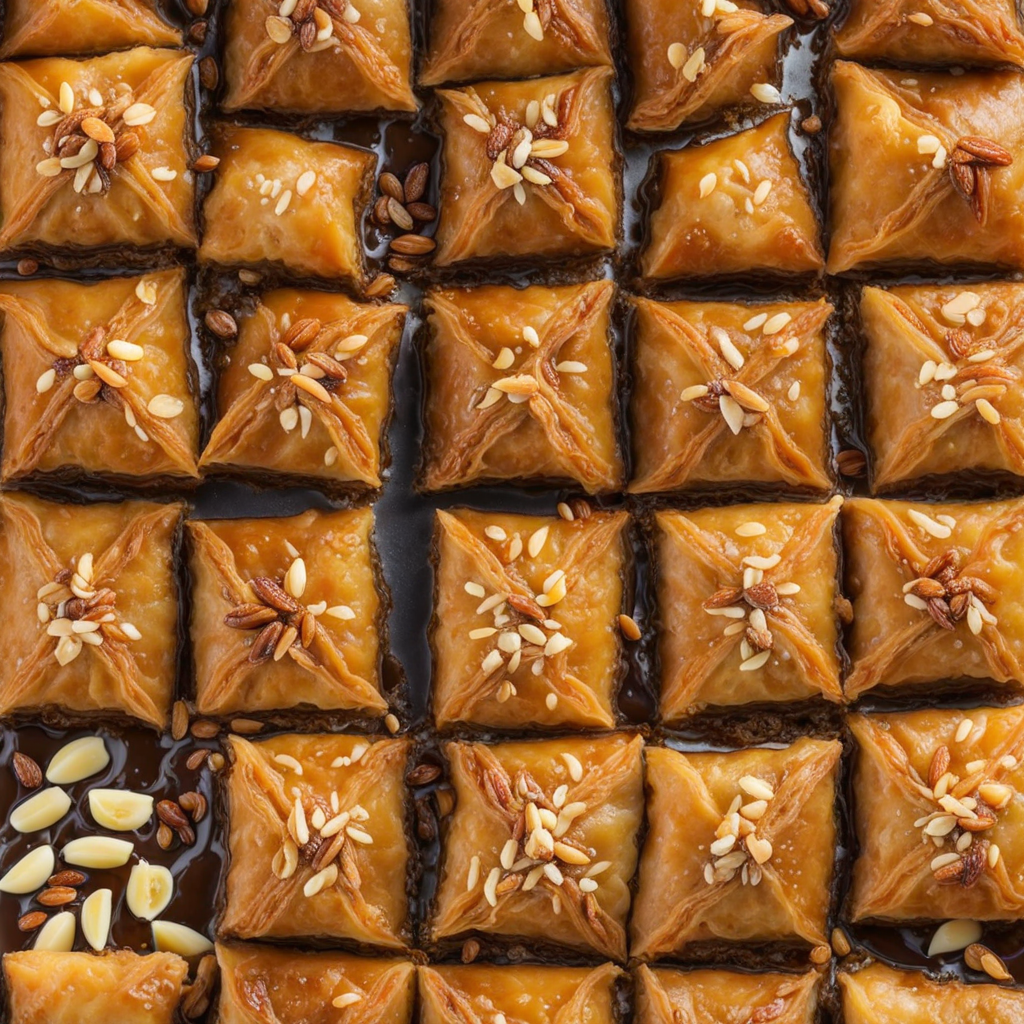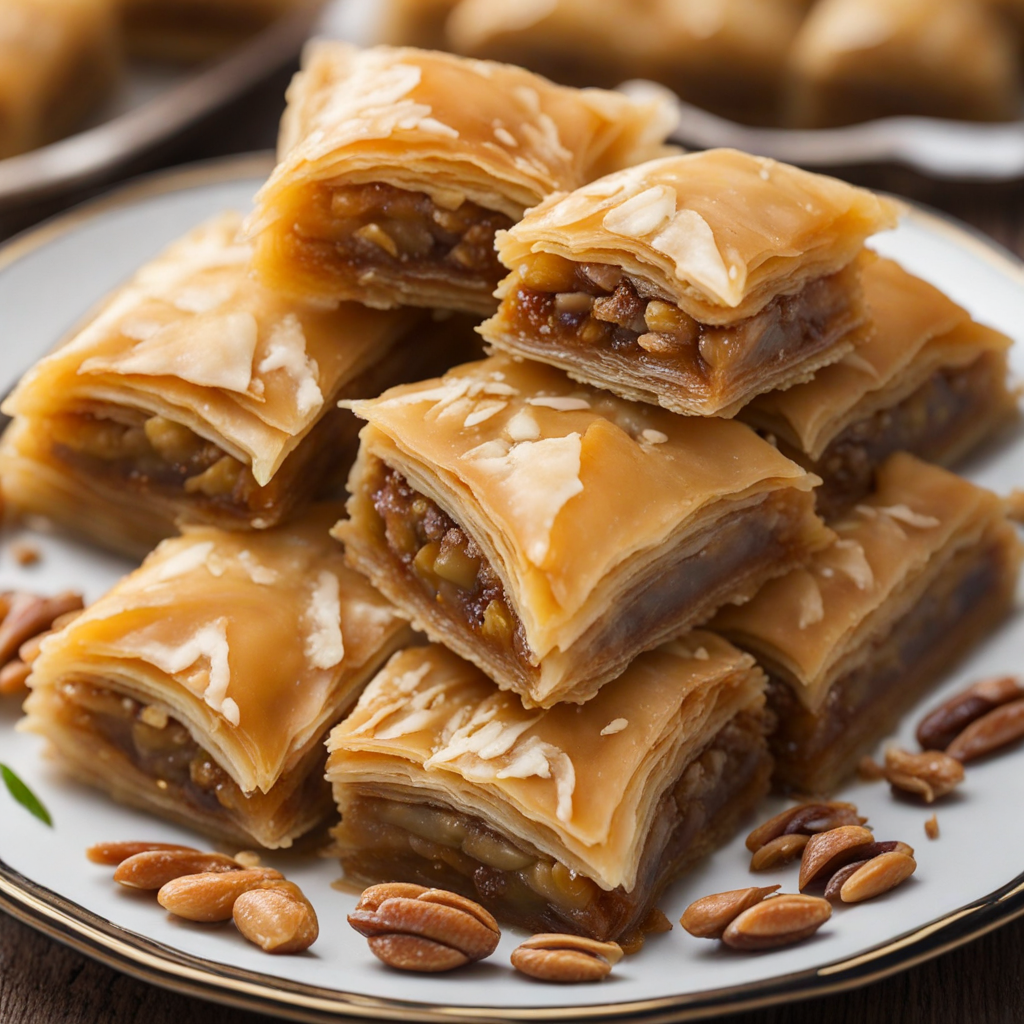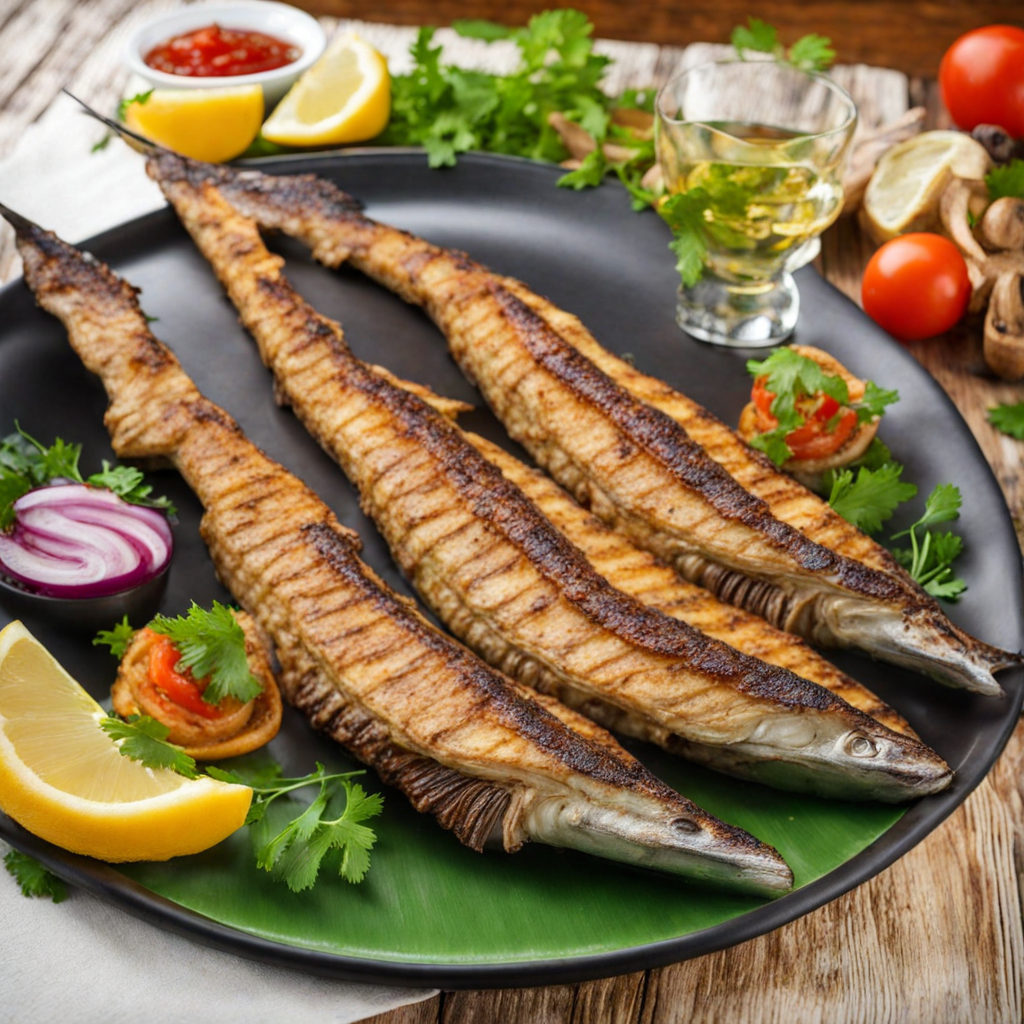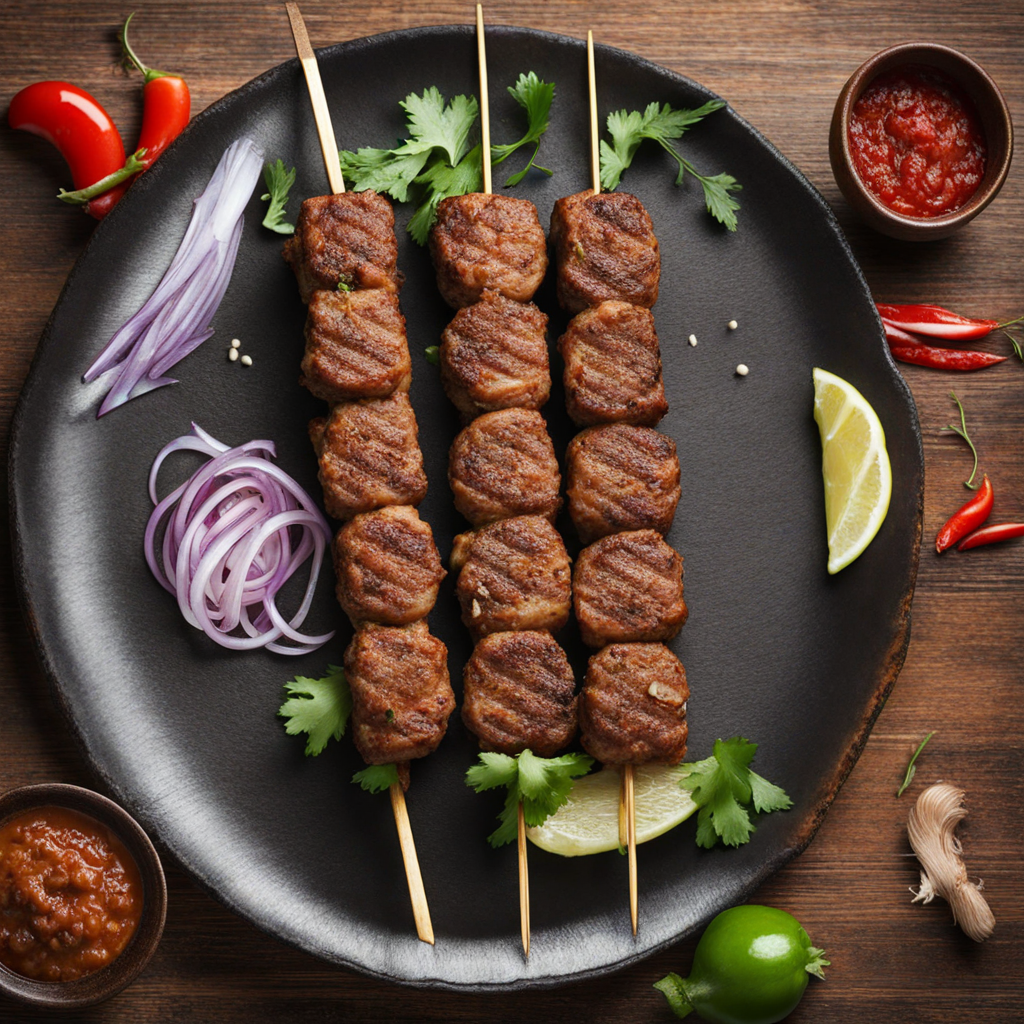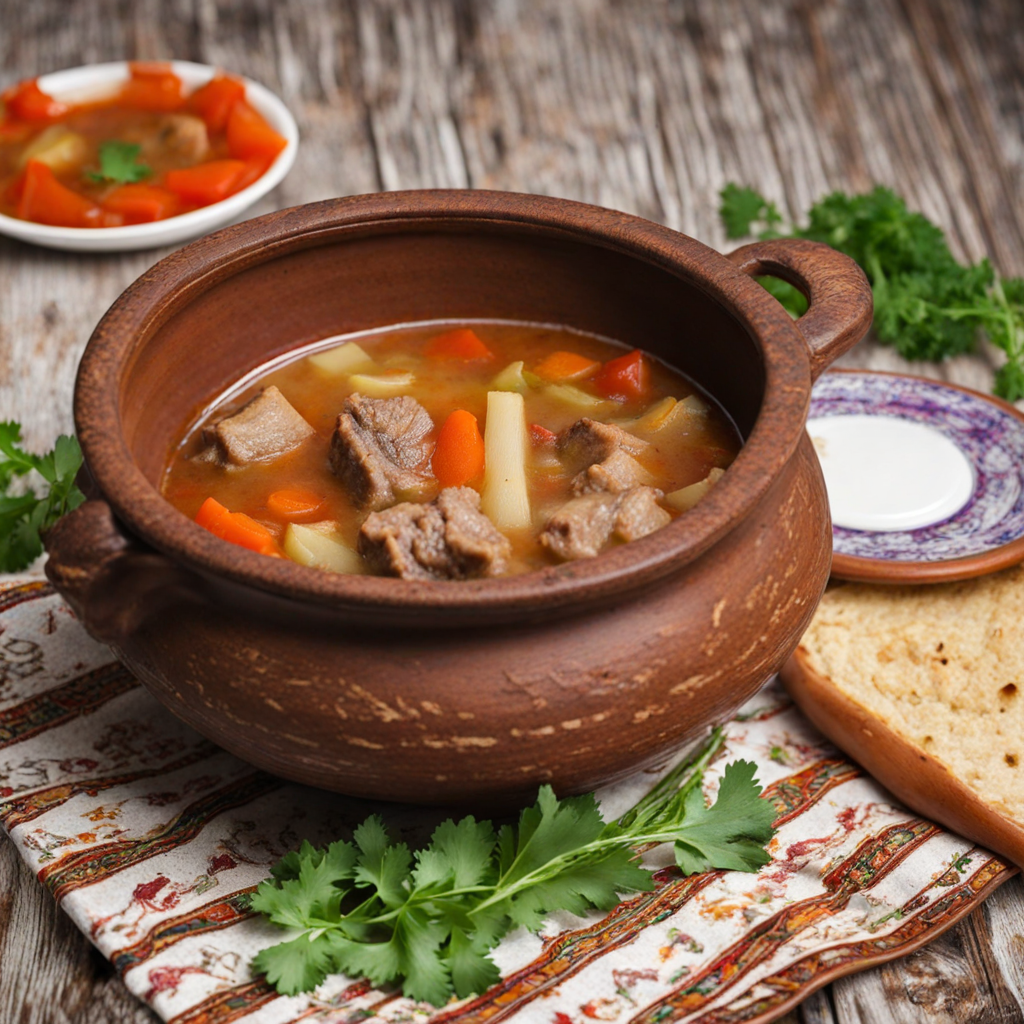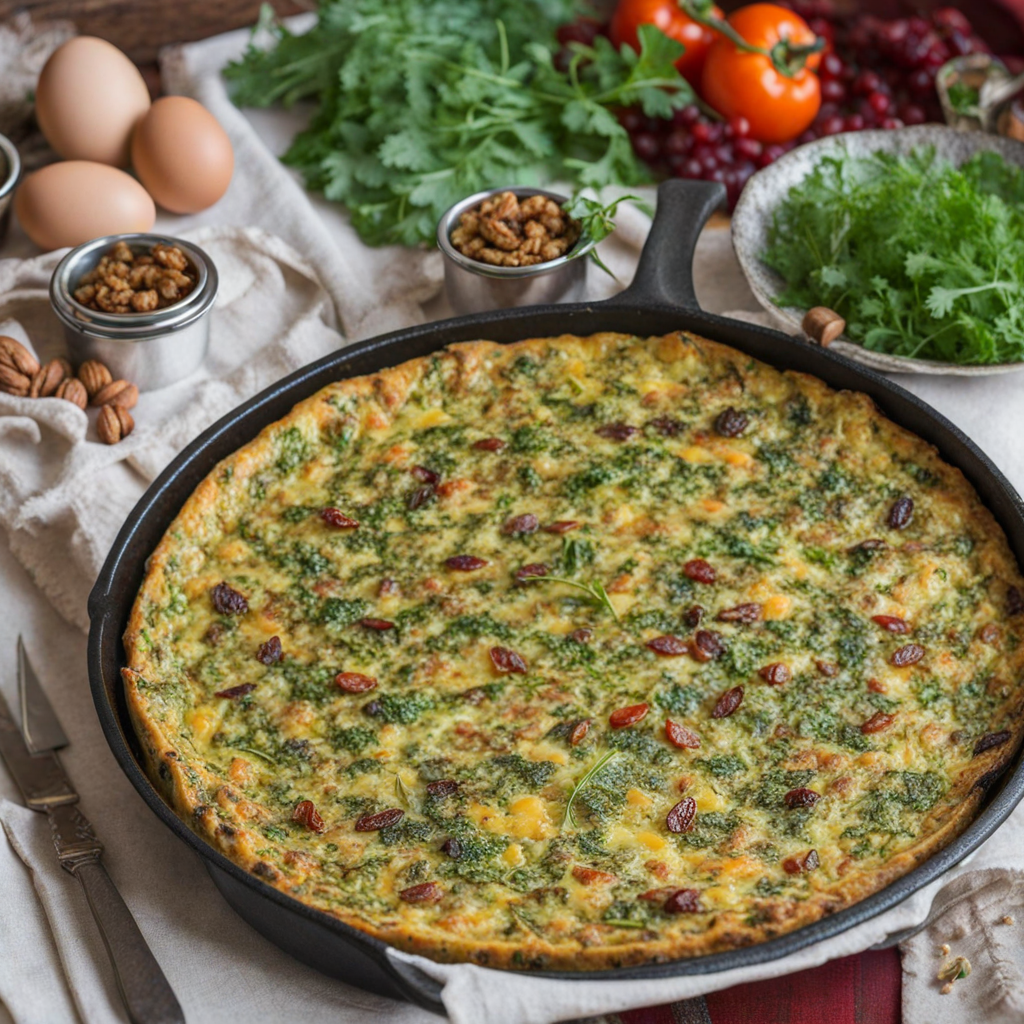Baklava
Baklava, a beloved dessert originating from the rich culinary traditions of Azerbaijan, showcases the intricate flavors and textures that define the region's gastronomy. This delectable treat is made from layers of thin pastry known as yufka, which is delicately brushed with melted butter to create a flaky, golden crust. Each layer is generously filled with a mixture of finely chopped nuts, typically walnuts or pistachios, sweetened with sugar and infused with fragrant spices such as cinnamon. The combination of these ingredients gives baklava its signature richness and depth of flavor, making each bite a delightful experience. Once the baklava is assembled and baked to perfection, it is soaked in a fragrant syrup made from a blend of sugar, water, and a hint of lemon juice or rosewater. This syrup seeps into the layers of pastry, enhancing the sweetness and adding a luscious moisture that balances the crunch of the nuts. The result is a harmonious blend of textures—the crispy exterior contrasted with the tender, nutty filling, all enveloped in a sweet, aromatic glaze. The process of making baklava is an art form, reflecting the meticulous craftsmanship passed down through generations. In Azerbaijan, baklava is often enjoyed during festive occasions and family gatherings, symbolizing hospitality and celebration. Each region may have its own twist on the classic recipe, incorporating local nuts or unique flavorings, making it a versatile dessert that adapts to various tastes. Whether served alongside a cup of strong Azerbaijani tea or as a sweet treat after a hearty meal, baklava offers a taste of Azerbaijani culture and a journey through its rich history, inviting enthusiasts to explore its many layers of flavor.
How It Became This Dish
The History of Baqlava: A Sweet Legacy from Azerbaijan Origins and Historical Context Baqlava (or Baklava), a syrup-soaked pastry filled with nuts and spices, is a culinary wonder that has transcended borders and cultures, with its roots deeply embedded in the rich tapestry of Azerbaijani history. The origins of baqlava can be traced back to ancient civilizations, particularly the Assyrians, who are believed to have created a layered pastry using thin bread and nuts as early as 2500 B.C. However, it was the Silk Road, the ancient trade route connecting East and West, that facilitated the exchange of ingredients, techniques, and culinary traditions, paving the way for the evolution of baqlava as we know it today. In Azerbaijan, the history of baqlava is intimately tied to the region's cultural exchanges and the influences of various empires. The Persian Empire, the Ottoman Empire, and the Mongol invasions contributed to the diverse culinary landscape of Azerbaijan, where different techniques and flavors intermingled, creating a unique version of this beloved dessert. The combination of regional nuts, particularly walnuts and hazelnuts, and the use of local honey, set Azerbaijani baqlava apart from its counterparts found in other countries. Cultural Significance In Azerbaijan, baqlava is much more than just a dessert; it is a symbol of hospitality, celebration, and cultural identity. The preparation and sharing of baqlava often accompany significant life events, such as weddings, religious holidays, and family gatherings. Its rich flavors and intricate layers make it a centerpiece during festive occasions like Novruz Bayram (the Persian New Year), where families come together to celebrate the arrival of spring and the renewal of life. During these celebrations, baqlava is served alongside other traditional sweets and dishes, creating a symphony of flavors that reflect the diversity of Azerbaijani cuisine. The act of preparing baqlava, often a family affair, involves generations coming together in the kitchen, passing down recipes and techniques that have been honed over centuries. This communal aspect of baqlava-making reinforces familial bonds and preserves cultural heritage. Ingredients and Preparation Azerbaijani baqlava is characterized by its distinct layers of dough, traditionally made from flour, water, and salt. The dough is rolled out into thin sheets, which are then layered with a rich filling of finely chopped nuts, sugar, and aromatic spices such as cinnamon and cardamom. Unlike some variations of baqlava that use pistachios, Azerbaijani versions often highlight local nuts, particularly walnuts and hazelnuts, creating a unique flavor profile. Once assembled, the layered pastry is baked until golden and then drenched in a fragrant syrup made from honey, sugar, and lemon juice. This syrup not only sweetens the pastry but also adds a glossy finish that enhances its visual appeal. The process of making baqlava is labor-intensive, requiring patience and skill, which adds to its allure and significance as a labor of love. Evolution and Regional Variations As baqlava traveled across borders, it adapted to local tastes and ingredients, leading to various regional interpretations. In Azerbaijan, the traditional method of making baqlava has remained largely unchanged, although modern techniques and conveniences have made preparation easier for contemporary cooks. In urban areas, ready-made dough is sometimes used, but the essence of the dish—its layers, flavors, and cultural significance—remains intact. In addition to the traditional recipe, regional variations have emerged within Azerbaijan itself. For instance, in the northern regions, baqlava may be made with a slightly different nut mixture or flavored with local herbs, while in the southern regions, it may be more heavily spiced. Each variation reflects the unique agricultural practices and culinary preferences of the area, adding to the rich diversity of Azerbaijani cuisine. Culinary Recognition and Global Influence In recent years, Azerbaijani baqlava has gained recognition on international platforms, showcasing the country's culinary heritage to a broader audience. Food festivals, culinary competitions, and cultural events have allowed chefs and home cooks to share their interpretations of baqlava, further elevating its status as a beloved dessert. Moreover, the global interest in Middle Eastern and Central Asian cuisine has led to an increased appreciation for baqlava's intricate flavors and textures. Azerbaijani restaurants around the world often feature baqlava on their menus, introducing this delectable dessert to new audiences and ensuring its place in the global culinary landscape. Conclusion: A Sweet Legacy Baqlava is more than just a sweet treat; it is a testament to the rich history and cultural identity of Azerbaijan. From its ancient origins along the Silk Road to its modern-day status as a beloved dessert, baqlava embodies the spirit of hospitality and celebration that is central to Azerbaijani culture. The meticulous preparation and communal aspect of making baqlava serve as a reminder of the importance of family, tradition, and the sharing of food as a fundamental human experience. As we indulge in a piece of baqlava, we are not just savoring its sweetness; we are tasting the centuries of history, cultural exchanges, and love that have shaped this iconic dessert. Whether enjoyed at a festive gathering or shared among friends and family, baqlava continues to bring people together, bridging generations and celebrating the richness of Azerbaijani culinary heritage.
You may like
Discover local flavors from Azerbaijan


